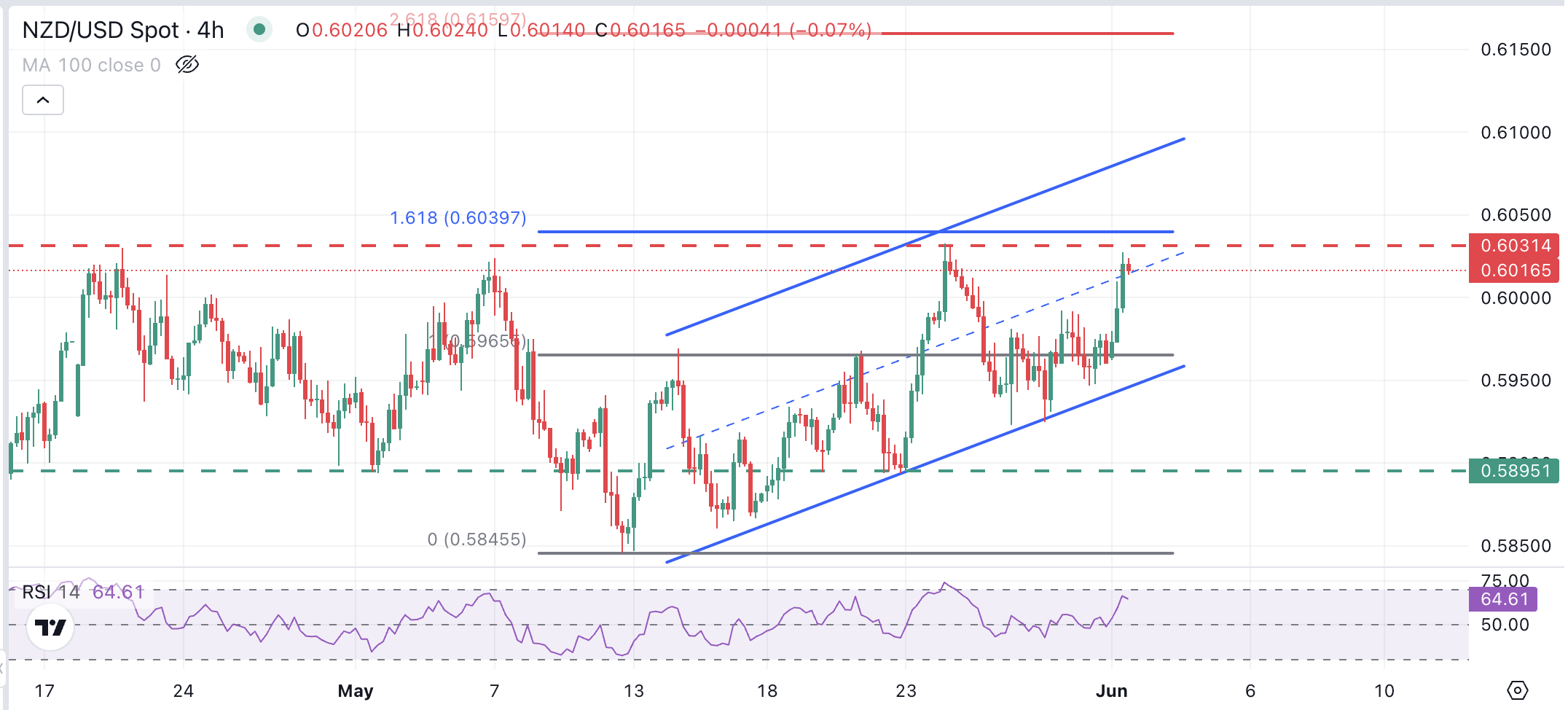NZD/USD Price Forescast: Above 0.6030, the next target is 0.6090
- The US Dollar bleeds on fresh tariff threats and looming US Debt fears.
- Dovish comments from Fed Waller have increased pressure on the USD.
- NZD/USD is testing Year-to-Date highs at 0.6030.
The New Zealand Dollar is one of the best performers on Monday. The Kiwi is dragging support from a weaker US Dollar, to retrace last week's losses, with bulls testing a key resistance area at 0.6030.
Trump’s comments, threatening to double tariffs on steel, a new rift with China on minerals trade and looming concerns about US debt are hammering the US Dollar across the board at the week's opening.
Beyond that, data from Friday showed that US PCE inflation kept cooling, in spite ot the tariffs chaos, which keeps hopes of further Fed easing alive. Earlies today, Fed Governor Christoper Waller has supported that view, adding pressure on the USD.
NZD/USD bulls are testing a key resistance at 0.6030
From a technical standpoint, the Kiwi keeps moving within an ascending channel. The 4-Hour RSI is high but still below overbought levels, and bulls are pushing against the 0.630 resistance area, the Year-to-Date high.
A confirmation above here will bring the trendline resistance, now at 0.6090, into focus. Above here, a 261.8% Fibonacci extension, a common target, is at 0.6160
On the downside, channel support is at 0.5950. Below that level, the next support would be the 0.5895 level, ahead of May’s low, at 0.5845.
NZD/USD 4-Hour Chart

New Zealand Dollar FAQs
The New Zealand Dollar (NZD), also known as the Kiwi, is a well-known traded currency among investors. Its value is broadly determined by the health of the New Zealand economy and the country’s central bank policy. Still, there are some unique particularities that also can make NZD move. The performance of the Chinese economy tends to move the Kiwi because China is New Zealand’s biggest trading partner. Bad news for the Chinese economy likely means less New Zealand exports to the country, hitting the economy and thus its currency. Another factor moving NZD is dairy prices as the dairy industry is New Zealand’s main export. High dairy prices boost export income, contributing positively to the economy and thus to the NZD.
The Reserve Bank of New Zealand (RBNZ) aims to achieve and maintain an inflation rate between 1% and 3% over the medium term, with a focus to keep it near the 2% mid-point. To this end, the bank sets an appropriate level of interest rates. When inflation is too high, the RBNZ will increase interest rates to cool the economy, but the move will also make bond yields higher, increasing investors’ appeal to invest in the country and thus boosting NZD. On the contrary, lower interest rates tend to weaken NZD. The so-called rate differential, or how rates in New Zealand are or are expected to be compared to the ones set by the US Federal Reserve, can also play a key role in moving the NZD/USD pair.
Macroeconomic data releases in New Zealand are key to assess the state of the economy and can impact the New Zealand Dollar’s (NZD) valuation. A strong economy, based on high economic growth, low unemployment and high confidence is good for NZD. High economic growth attracts foreign investment and may encourage the Reserve Bank of New Zealand to increase interest rates, if this economic strength comes together with elevated inflation. Conversely, if economic data is weak, NZD is likely to depreciate.
The New Zealand Dollar (NZD) tends to strengthen during risk-on periods, or when investors perceive that broader market risks are low and are optimistic about growth. This tends to lead to a more favorable outlook for commodities and so-called ‘commodity currencies’ such as the Kiwi. Conversely, NZD tends to weaken at times of market turbulence or economic uncertainty as investors tend to sell higher-risk assets and flee to the more-stable safe havens.
